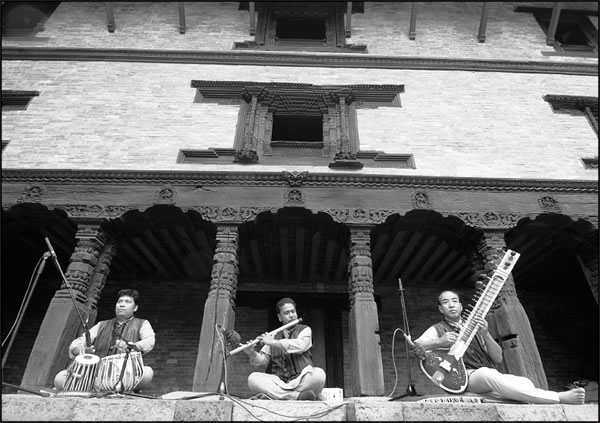By Adrienne Urbanski
Whether the theme of a fictional plotline, the subject of a documentary, or a soundtrack catchy enough to sing along with, music plays a starring role in many of the films at this year’s Festival.
“Music and film are the most powerful art forms in their ability to reach people,” says Mark Johnson, co-director of “Playing For Change: Peace Through Music.” The result of a year’s travel across four continents, their documentary records various musicians at work and weaves their music into one global song, exemplifying Johnson’s contention that music transcends cultural barriers.
Despite being separated by continents and oceans, the featured musicians are unified by singing the same songs together. These include “Stand By Me” and “One Love,” which the directors feel reflect the tone of their film. “Through music,” says Johnson, “we hope to raise a better consciousness for the planet.” The movie explores the music of a post-Katrina New Orleans, showing how music has helped the city to recover its spirit, and the traditional music of Native Americans on an Indian Reservation. In South Africa, music represents a force that helped its citizens live through an apartheid, while in Tibet, it offers a “peaceful means to inspire change.”
Global travel also plays a role in the film “Hidden in Plain Sight,” in which director Mark Street set out to depict “portraits of cities around the world that celebrate each place as a character.” Every city possesses its own musical backdrop. “It’s ambient instrumental music that has a rhythm with the sounds of the street, you will hear sounds like the sound of a car reflected in the music,” says Street. He taped street musicians he encountered and those recordings give a sense of the differing sound-scapes and resulting in film Street refers to as “visual music.”
“The 27 Club” plays upon the well-known phenomena of legendary rock musicians dying at the age of 27 (Jimi Hendrix, Janis Joplin, Jim Morrison, Kurt Cobain, and Brian Jones) In the feature, a successful band is destroyed when one of its members commits suicide at 27, leaving his bandmate wondering whether he can continue on with his musical aspirations. Elliot drives from LA to New York contemplating life without his best friend and pondering the role of music in his life. Keeping his company is Three Words, a grocery store clerk who speaks only three words at a time.
“I don’t really think it’s about the number 27 in particular,” says director Erica Denton. “I think it’s about approaching 30 and growing up, really seeing where things are heading.”
Denton selected actors Joe Anderson and James Forgey due in part to their impressive musical skills, which adds an authenticity lacking in many music-centered movies. “I just put the two of them in a rehearsal space to hang out so that they could get together and just feel like a band, and get into their roles. I told them to just jam and sound however they sound. Just in that short time they wrote this amazing song together, which is featured throughout the course of the film,” says Denton.
As Eliot travels across the country, trying to sort out the death of his best friend and the future of his musical aspirations, he comes across experiences that speak to the power of music as a healing force. Among them is a choir in Louisville, Kentucky comprised of former drug addicts who use their voices to maintain a dedication to their sobriety and feel relief from their obstacles in life.
Denton however, acknowledges that there is a limit in terms of the role that music can play within a film. “Music is another layer, another texture for the film. When I make a film, I adopt a quite specific musical palette. I’m quite strict. I want every film to have a particular sound, a specific color palette. But you also have to be careful; your music has to work to enhance your characters. If the only thing that works in your film is the music, then your film doesn’t work. You have to think about whether if you removed every note it would still be capable of moving an audience.”
While she declares herself a lifelong music fan, Denton was opened up to exploring a deeper musical side of herself during the course of the movie, and wrote a song for the film. On the other side, a number of musicians try their hands at filmmaking this year. The Beastie Boys’ Adam Yauch’s “Gunnin’ For That Number One Spot” explores his duel loves of basketball and hip-hop. Filmed in New York City, the documentary follows teenage boys chasing their dreams of being basketball greats. Also notable among the musically oriented offerings is “Squeezebox!”, a documentary centering on a legendary New York club filled with drag queens staging elaborate rock shows. This later became the birthplace of the musical “Hedwig and the Angry Inch.” In “War Child,” debut director C. Karim Chrobog documents the story of Emmanuel Jal, who survived Sudan’s 20-year civil war and now uses music to raise awareness about the country’s plight.
This spring, the Festival’s offerings certainly reflect the transformative and evocative power of music in film.
































